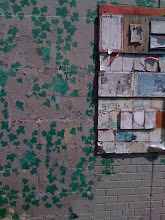
As the election approaches, attention has shifted from politics to pantsuits. Clothes have become a campaign issue.
Image experts have always postulated that dressing for success is especially important for politicians; smart dressing connotes recognition of the serious responsibility involved, and the polish necessary to get the job done smoothly. This is probably one of the reasons that Republican vice presidential candidate Sarah Palin has undergone a last minute, dramatic transformation, abandoning her gubernatorial cowl-neck sweaters for couture skirt suits.
“Outfitgate” is the latest scandal rocking the Republican campaign. In recent weeks, Palin has ditched her J.C. Penney clothes for a $150,000 designer wardrobe from high-end, high–price tag department stores like Barneys, Saks Fifth Avenue, and Neiman Marcus. The Republican Party footed the considerable bill.
The sartorial scandal offers us an interesting opportunity to reflect on the relationship between clothes and communication: What do the clothes we wear tell people about what we believe in?
The question applies to the clothing choices we make in our everyday lives. I can’t stand clutter, and my clothes communicate that I prioritize organization: I am big on color coordination, and I prefer crisp cropped jackets to lackadaisical layers. These are pretty innocuous sentiments; it’s likely that no one but my roommate minds my obsession with order. The clothes worn by a public figure, especially a politician, are much more controversial—especially when the messages the clothes communicate are incongruous with the politician’s platform.
The Republican Party has pitched Sarah Palin to the American people as a moose-hunting hockey mom. Her appeal was partly due to her embodiment of middle class ideals. Her cable-knit turtlenecks were versatile enough to go from campaign meeting to PTA meeting. These clothes reflected Palin’s investment in being both a career woman and a family woman, an ideology championed by the present Republican campaign. Palin’s new wardrobe seems incompatible with the middle-class family values that she has publicly espoused; an Oscar de la Renta skirt suit would be out of place in an ice rink.
Moreover, the shopping spree could spell political disaster in a period of economic crisis, in which $150,000 is more than a year’s salary for many Americans. Given the state of the American economy, spending so much on clothes seems frivolous and out of touch. The Republican campaign has been interested in trying to identify with Joe Six-Pack, but no Joe can afford a wardrobe that costs more than a car or a college education. Stores like Target and J.C. Penny, on the other hand, are infinitely more relatable. These stores can be found in almost every town in America and offer clothes within the voters’ price range. Target’s line of clothes by designer Isaac Mizrahi includes some speech-worthy cap-sleeve dresses that start at just $40. When topped with a $17 black cardigan, the outfit would definitely get my vote. If Palin wants to position herself as similar to a large portion of American voters, why does she choose not to dress like them?
Palin and McCain have suggested that the expensive ensembles are just campaign costuming and will be returned or donated to charity following the election. But why have Palin dress up only to later put her back in the consignment-store jeans she proudly wore in front of crowds at a campaign stop in Alaska? The Republican Party needs to think about the ideological implications of Palin’s skirts and suits. At this stage in the race to the White House, alienating the voting population would be a major faux pas. When dressing the part costs an arm and leg, it might cost Palin some votes as well.





